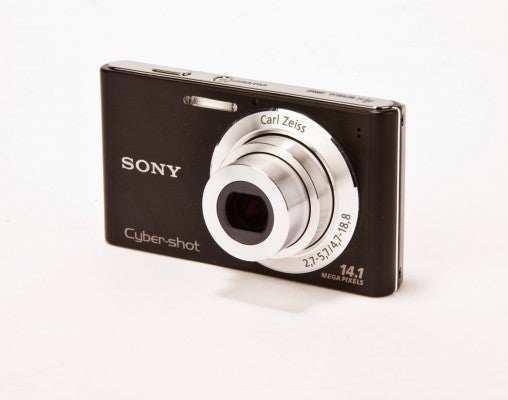Stylish sub-£100 compact
Sony Cyber-Shot W320 Review
Sony’s W series of Cyber-Shot compacts covers sub-£100 models with just the basics in place, right up to mid-range offerings packed with Sony’s trademark technologies. With an asking price of £95 the W320 is positioned firmly towards the former camp, but with a diminutive, lightweight body it may just be the useful pocket compact many are after.
Sony Cyber-Shot W320 Review – Features
Inside its shell lies a 1/2.3in CCD with an effective 14.1MP, while a 4x optical zoom lens provides an equivalent focal range of 26-105mm. Exposure control is limited to Intelligent Auto and Program settings, as well as a handful of scene options, while a 9-point autofocus system covers the central portion of the frame.
The camera’s sensitivity range of ISO 100-3200 is admirable, and theoretically allows it to shoot images in a variety of lighting conditions, while the now-standard Face Detection is twinned with a Smile Shutter mode, which recognises the instant a person has smiled and automatically fires the shutter.
Images and movies are displayed on a 2.7in LCD screen, which offers the standard 230,400dot resolution we would expect from a model priced this low, but its narrow viewing angle makes it difficult to compose images whenever the camera is tilted in any direction. Not only that, but its tendency in brighter conditions to blow out detail between the camera being focused and the shutter firing can make it difficult to see the scene as it’s being shot.
Sony Cyber-Shot W320 Review – Performance
Both start-up and powering-down times are satisfactory, and zooming is fast enough to catch a scene without the user losing control over where it stops. Focusing happens quietly and in good time too; only when the camera is presented with a tricky low-contrast scene does it struggle to find focus, but even here it moves swiftly throughout its range until it’s satisfied that it’s found the right point.
A simple camera like the W320 only requires a straightforward menu system, and the large icons and clear explanations make it easy for anyone to understand the camera’s functionality. The small buttons may not be to everyone’s liking, though, particularly larger handed users who may not be able to conveniently operate them, while the stiffness of the shutter release button means that knowing when the camera has focused on a scene isn’t always obvious, particularly when you may not be able to hear the confirmation, (or see it, thanks to the issues described above).
Sony Cyber-Shot W320 Review – Image Quality
For all its performance-related annoyances, the W320 nevertheless manages a reasonable standard of image quality, particularly when its modest asking price is considered. Exposure is spot on in the majority of occasions, but leaning more towards overexposure than underexposure means that highlight detail is occasionally lost. The camera’s auto white balance system manages to retain the mood of the scene, with accurate results under both natural and artificial light, and even with flash, and while colour is good some images can appear a little flat and lacking both vibrancy and contrast on standard settings.
At the base sensitivity of ISO 80 detail is adequate for a camera of this level, while images shot higher up in the sensitivity range take on a watercolour-like appearance, with low colour noise but a rough and processed texture from noise reduction. Sadly, while the camera is very much capable of maintaining sharpness right up to edges and corners of the frame, the Intelligent Auto system often fails to select the right settings to keep all details in focus, meaning that many images which should be sharp throughout the frame fail to be sharp outside of their centre.
Verdict
With reliable exposure and white balance systems producing print-ready results, the tiny W320 seems to fit the bill as the ideal pocket camera. It's a shame, therefore, that image softness, a poor LCD screen and fiddly controls all make it a less appealing candidate for the task.





